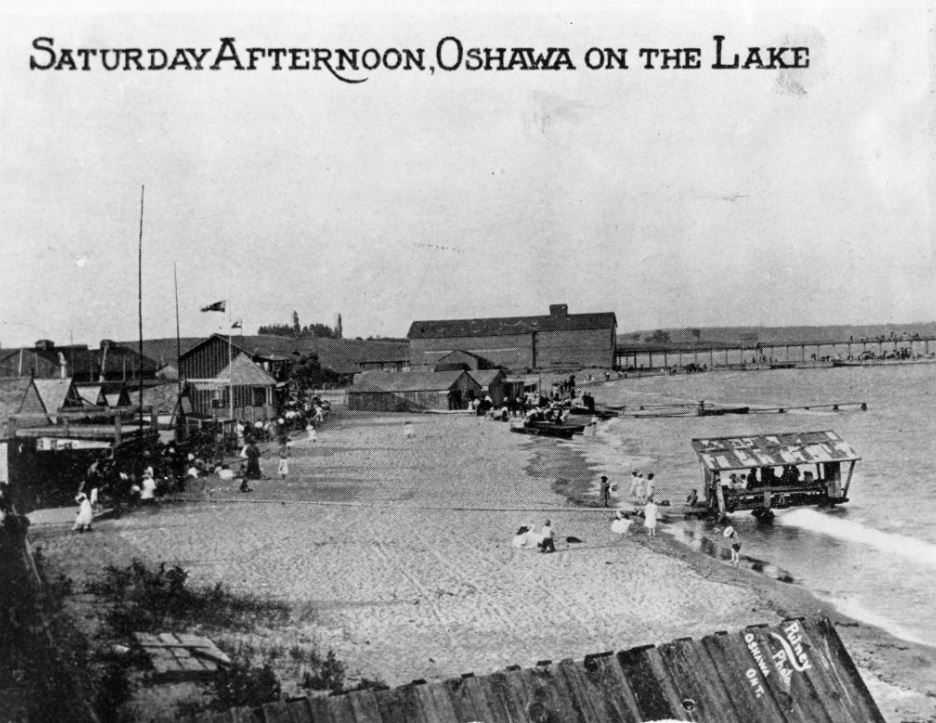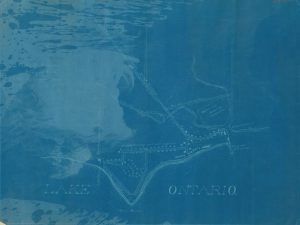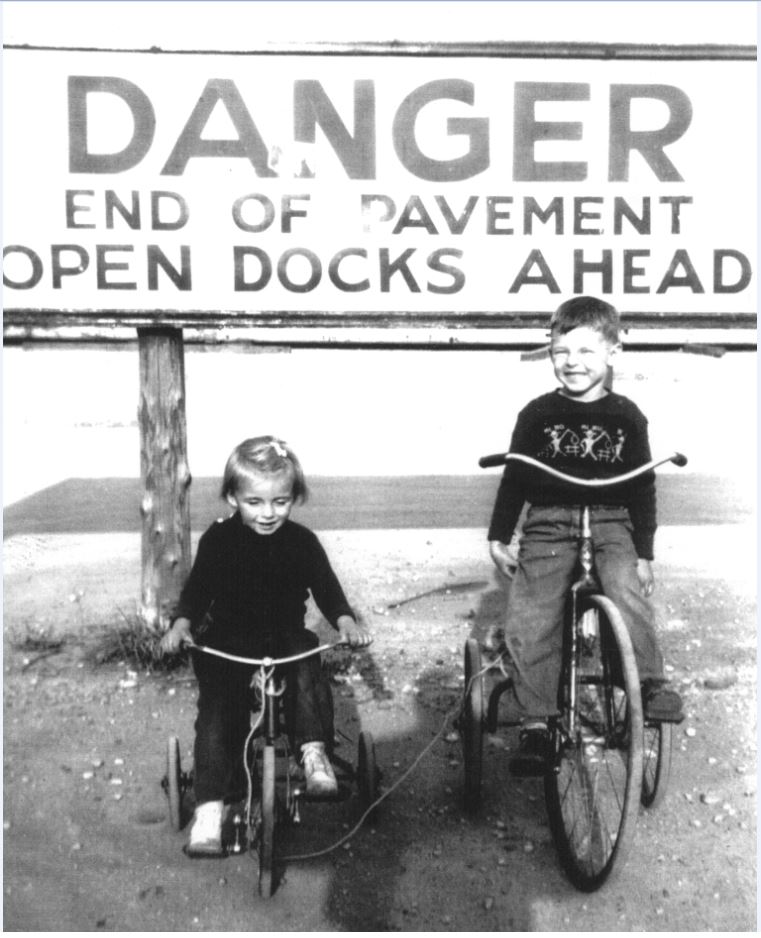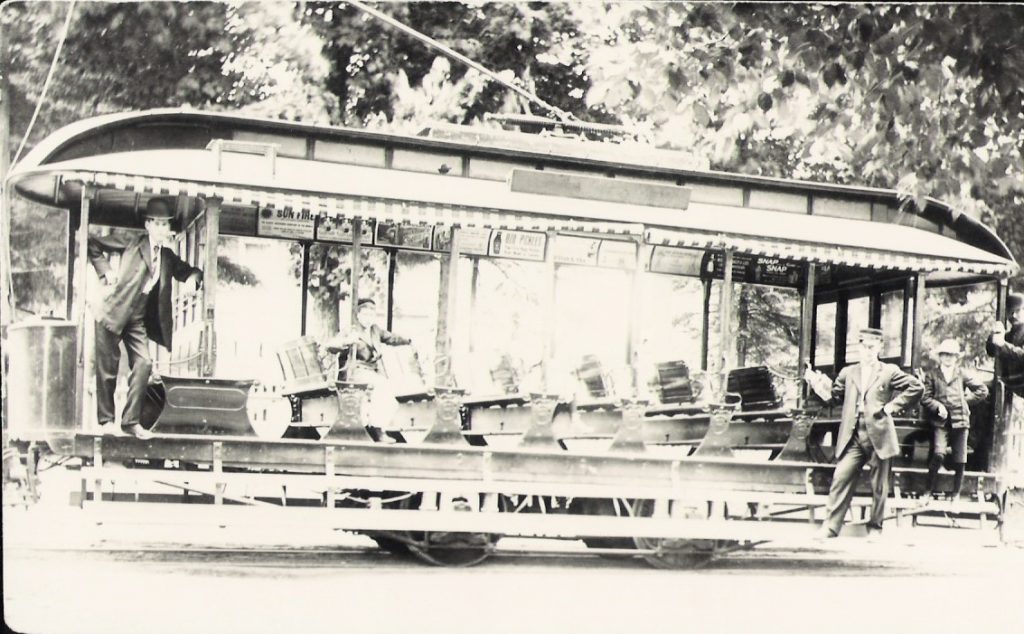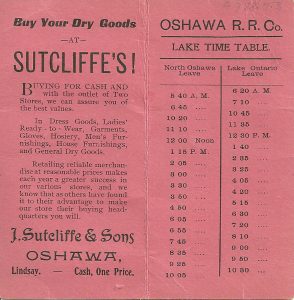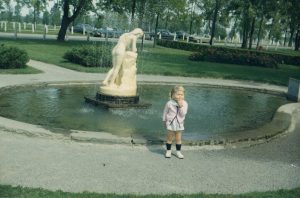Oshawa-on-the-Lake
A great amount of interest was shown to Oshawa-on-the-Lake as a summer retreat. Families from Oshawa and surrounding areas moved to or visited the shore of Lake Ontario, and some families stayed there all summer long. It was here that they celebrated family, community, and the lakefront’s natural beauty.
I remember the cottages very well, and I lived in two of them. The first one was 355 Lakeshore Rd. It was the last house on the north side. Next to our cottage stood the ‘DANGER’ sign and the harbour and stone piles.
– Linda Cory Bazowsky, Oshawa-on-the-Lake Resident, 2002
There were many cottages along the waterfront comprising a small, close-knit community that remained at the lakefront year-round. The cottages were available to be rented out during the summer months. Many of the cottages were not luxurious as they had no winter insulation, electricity or running water. One cottage that stood out amongst the rest was the Red Cross cottage. It was built by the Oshawa Rotary Club as a summer holiday cottage for the Children’s Aid Society. Over the years, many of these small cottages began to age, and some fell into disrepair. The last tenants vacated the area in the 1980s.
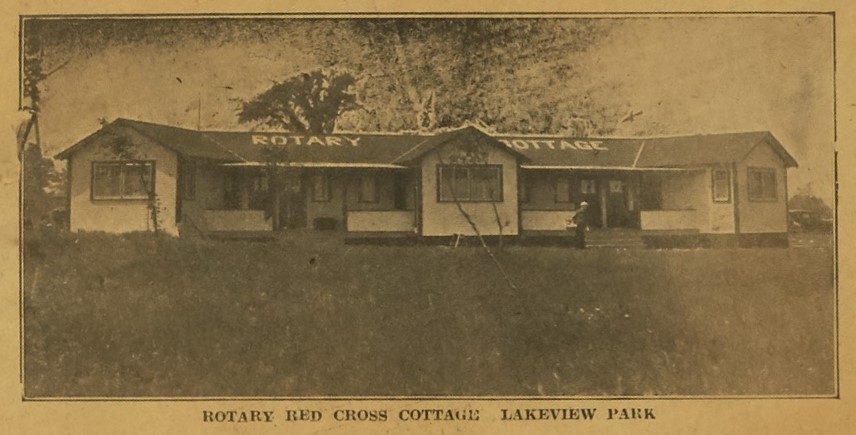
The Rotary Red Cross Cottage, constructed in 1927, was located in Lakeview Park, Oshawa. It is unknown when it was torn down.
Park-goers would travel to the lakefront from Oshawa on one of the open-sided electric street cars. The summer street railway, operated by the Oshawa Railway Company, ran eleven trips a day to the lakefront starting at 6:00 am.
It carried passengers from downtown to the waterfront, where individuals would enjoy a day at the waterfront or board one of many steamboat lines that picked up passengers at the pier, taking them on excursions around Lake Ontario.
The following video captures the Oshawa shoreline around the harbour in 1935.
Oshawa Shoreline and Harbour 1935. Enjoy this video clip with an English transcription.
Oshawa-on-the-Lake became Lakeview Park in 1920. When 44 acres of lands at the waterfront, were donated to the City of Oshawa for $1 by George William McLaughlin and Robert Samuel McLaughlin. It opened to the public in September of that year, though some of its better known features like the Jubilee Pavilion and the band shell would only be added in 1927.
One of the park’s most recognizable features, the Lady of the Lake fountain was first added in 1959, and moved to its current position in 2001.
The Park has a supervised beach, three baseball diamonds, five soccer fields, a picnic shelter, many gardens, a restaurant and conference centre (Jubilee Pavilion), and the Oshawa Museum.
Lakeview Park hosts a wide variety of events, including annual favourites like Ribfest, Autofest, and Canada Day festivities.
For more info on Lakeview Park, please visit the Oshawa Museum’s online exhibit, celebrating Lakeview Parks 100+ year history: https://lakeviewparkoshawa.wordpress.com/


